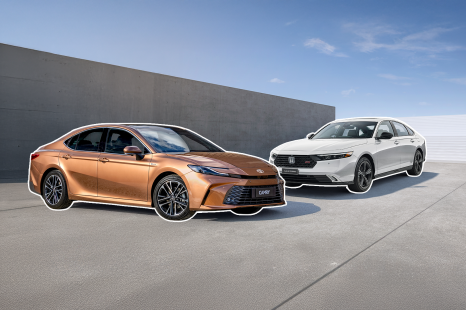

Andrew Maclean
2025 Honda Accord e:HEV RS vs Toyota Camry SL: Spec Battle
2 Months Ago
Porsche has revealed the Taycan '2.0'. We hopped into the passenger seat for an early preview of what's to come from this performance EV.



Quickly see how this car stacks up against its competition. Select any benchmark to see more details.
Where expert car reviews meet expert car buying – CarExpert gives you trusted advice, personalised service and real savings on your next new car.
It’s snowing heavily on the autobahn out of Stuttgart but our driver, Florian, is relaxed and smiling as he triggers the ‘push-to-pass’ button and our Porsche Taycan goes ballistic.

This is the party trick for the heavily-revised Taycan 2.0 and the digital speedo numbers flash rapidly past a totally-legal 200km/h despite the surrounding traffic.
The countdown on the instrument panel runs backwards from 10 to zero as a 1000Nm wall of torque hits as hard as anything in a Porsche road car. Then, thankfully, it’s over and we can sit and relax. Phew.
Much later there is a full-fat, launch-control, ‘push to pass’ exit from Porsche’s Weissach technical centre – fully approved by the guards on the gate – to bookend the ride-along preview to the 2024 Porsche Taycan and reinforce the work done for 2024.
The significance in the Taycan work is as obvious as Porsche’s work on electrifying its future. The German sports car company is about to go all-in on an electric-only replacement for its Macan SUV, its top seller, and is also finalising development of a battery-electric SUV flagship.
Against that backdrop, the switch to a single 800-volt electrical architecture for Taycan 2.0 makes even more sense. So, too, does a claimed range of up to 678 kilometres.
But the Taycan is here and now, with Porsche Cars Australia confirming “the new all-electric Taycan models will arrive in Australia in mid-2024”.
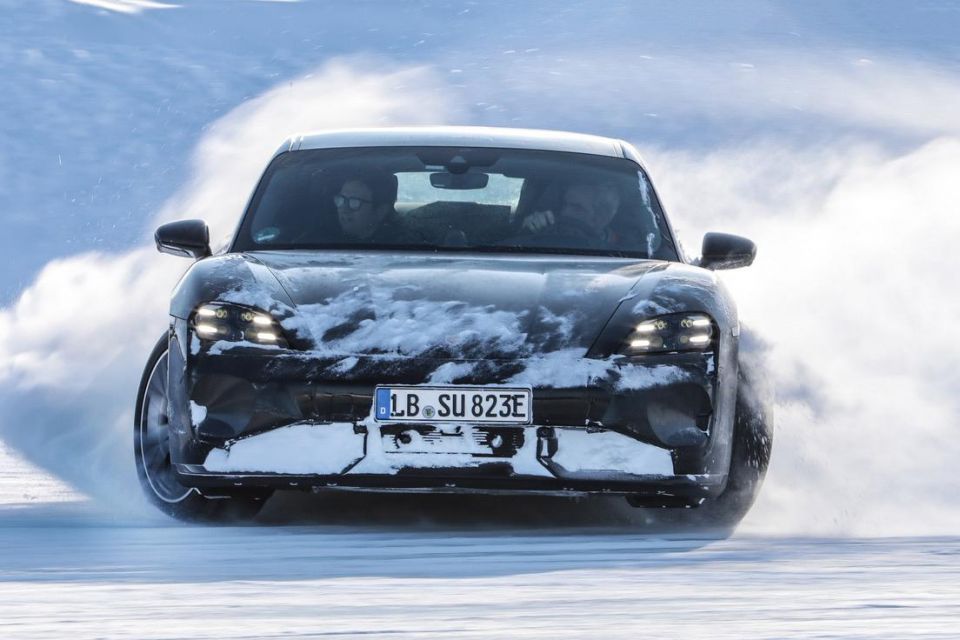
As expected, the $164,400 bottom line for the Taycan has blown out, with the updated car now starting from $175,100 before on-road costs.
The model walk-up continues with the Taycan 4S from $216,300, Turbo starting at $307,500, Taycan Turbo S from $374,200, Taycan 4 Cross Turismo starting at $198,000, then the 4S Cross Turismo from $224,000, and the flagship Taycan Turbo Cross Turismo starting at $310,400.
The extra spend brings a lot more technology to the car, as well as even-faster 0-100km/h sprint times, headlined by a 2.4-second result – trimmed by 0.4 seconds – on the Taycan Turbo S.
Charging times have also been trimmed, with Porsche claiming all versions can now be boosted from 10 to 80 per cent of capacity in 18 minutes – but it stresses this is with “maximum DC charging power”.
Adaptive air ride suspension is now standard across the range, with Porsche Active Ride on all-wheel drive models, and there is also a wireless charging pad in the cabin.
In Australia, the Taycan story began in 2021 – and 1496 cars have been sold since then.
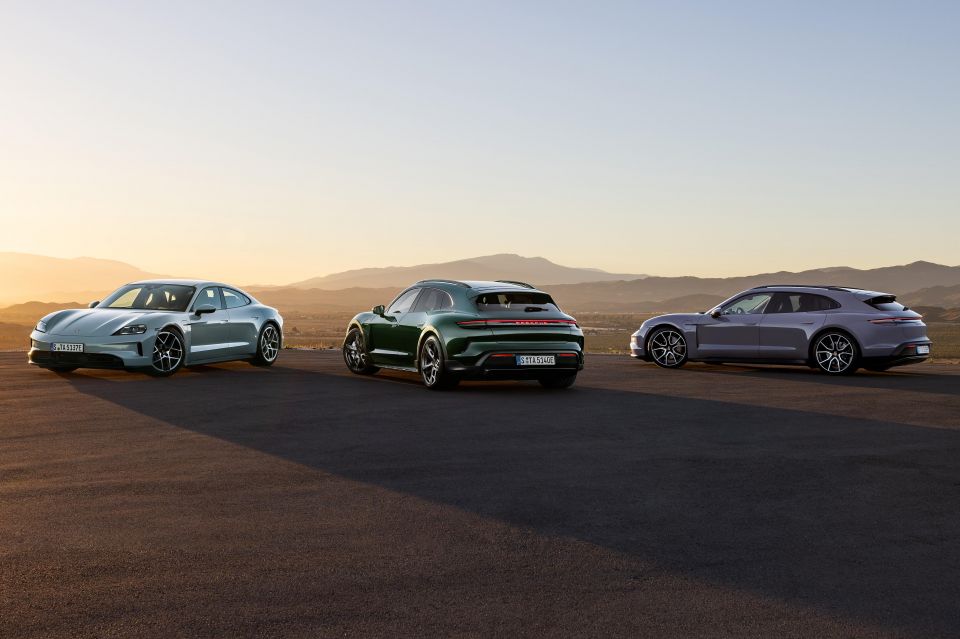
A long trip to Zuffenhausen in Germany just to ride in the updated Taycan – no chance to drive – is offset by a deep-dive technical briefing before the ‘ride along’ with Florian.
The mantra for the updated Taycan comes down to three words: ‘Higher, faster, further’. They are reflected in two hours of slides and chat and cover everything from the performance, range, charging system and suspension, as well as some tiny tweaks in the cabin and the ‘facelift’ work on the styling.
The result, even strapped into the back seat like a German industrialist on the way to a business conference, is impressive.
If only there was more visual impact…
Only a Taycan tragic, or someone looking to upgrade to the new model, will see much visual difference for 2024.
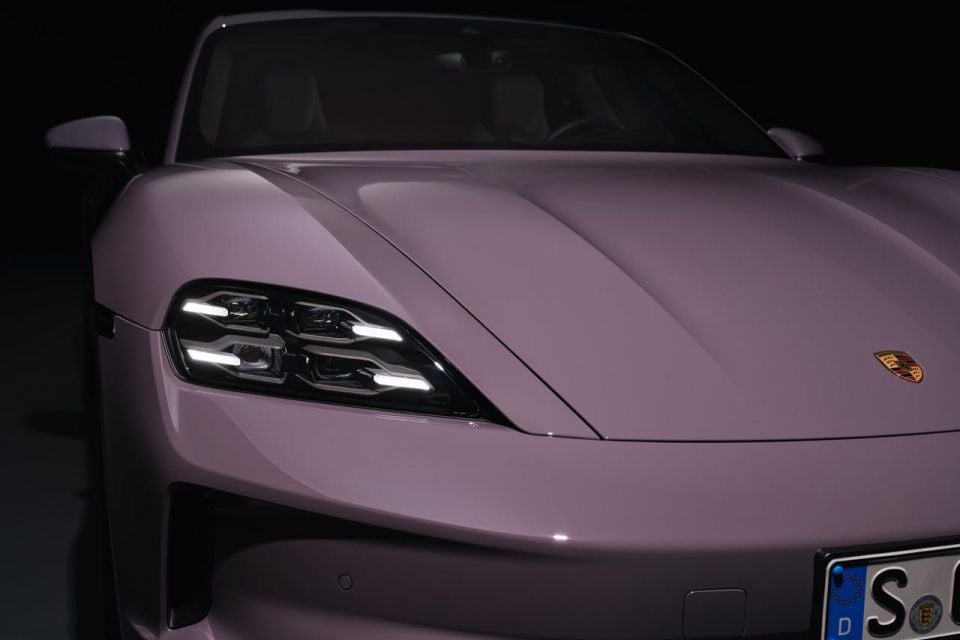
Porsche admitted as much when it left the design element of its media briefing until last.
The front guards are different and there is a bolder look to the tail lamps and badging on the boot. But the work has mostly concentrated on differentiating the model grades.
“We tried to sharpen the design of the Taycan in the second generation,” said Martin Nebe, development engineer at Porsche. “We changed the front apron, in the rear we designed a near rear fender. And the headlights are new, they are flatter now, and aerodynamically it is an improvement.”
The latest headlight package is part of the visual tweaking, but also includes a major upgrade to the ‘active matrix’ system with a jump from 84 to 32,000 individual pixels and a claimed range for the high beam which fires out to 600 metres.

Inside, there is expanded content and easier access in the infotainment system, and even ‘active cooling’ for the wireless phone charge pad for faster charging.
“We have animation special effects now. To have an extra emotional feel,” said Porsche.
There is also a system which allows the front passenger to watch online movies without distracting the driver.
The biggest spend on Taycan 2.0 was on improving efficiency, with 29 per cent of investment going that way and another 25 per cent directed to performance. Charging and design each got a 16 per cent share.

“The new Taycan is better in every respect,” said program director, Steffen Christian.
He also said the car was the next step on the road to full electrification, but added a significant warning.
“Of course, that’s always depending on demand,” he admitted.
There is sure to be support for the latest chassis improvements, right from the ‘Entrance Assistant’ system which raises the body for easier access.
Even the basic Taycan now has two-chamber air suspension and the walk-up through the grades everything from a curve-tilt package to keep the cabin sitting flat to an ’Active Skyhook’ package that insulates the car from changing road surfaces.
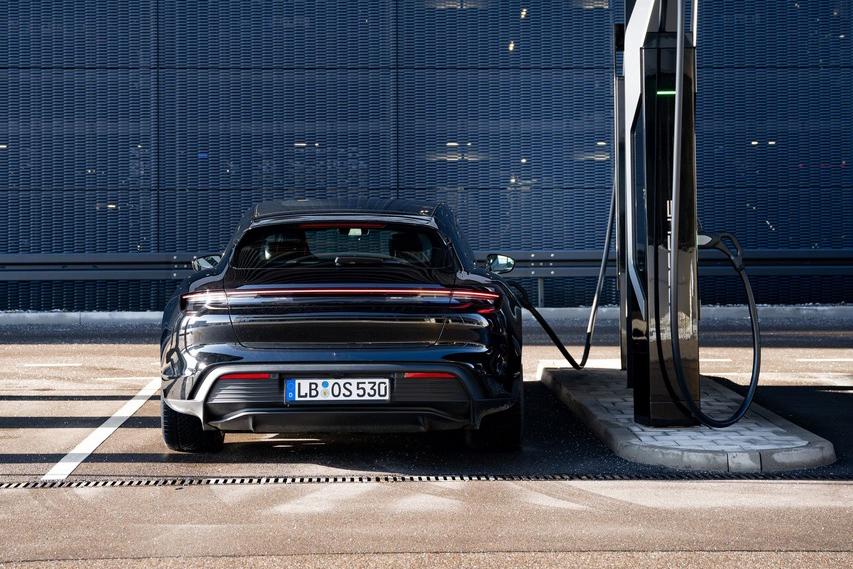
“We spent a lot of time and effort in optimising the range and the chassis can make a considerable contribution to that,” said Daniel Lunkeit.
“It’s really added value that we can offer our customers. It makes driving more comfortable.”
So there is a weight cut of 15 kilograms, helped by new alloys that also cut drag, more regenerative braking power, but still no move towards the ‘one-pedal drive’ of many other electric cars.
“That is not the Porsche philosophy. If you don’t need to brake, why should you. For us the philosophy is to have one pedal to accelerate, one pedal to brake.”
Peak power in Taycan 2.0 is up by as much as 140kW in the Turbo S, and even the base car jumps 60kW to 300kW. Range can be better by 35 per cent.
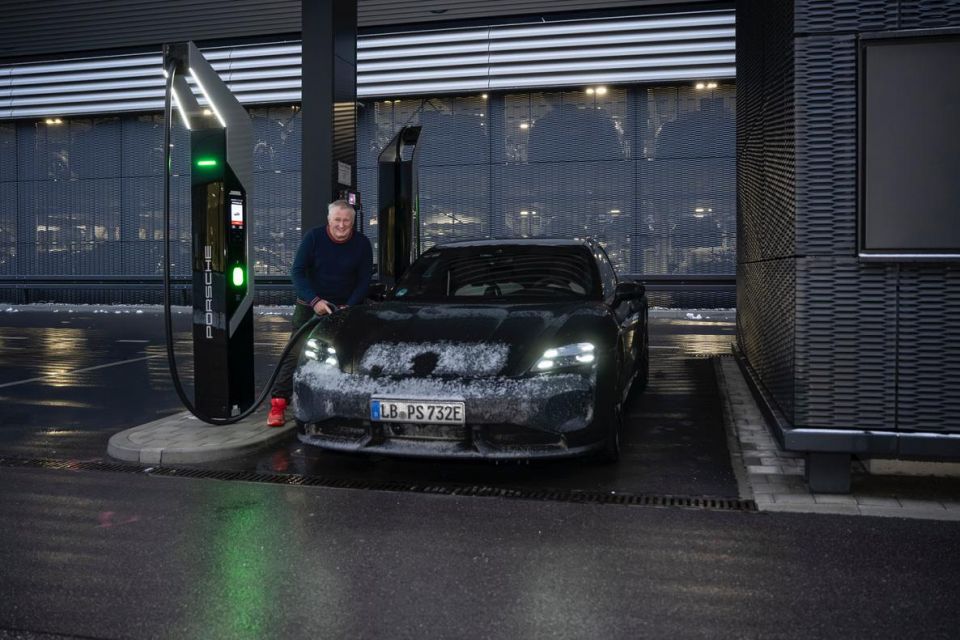
Those results come from higher battery capacity, efficiency improvements in the drivetrain, software work on the drive programming, and optimisation of everything from weight to aero.
Porsche has a new, smaller and lighter electric motor on the rear axle which is more efficient and has removed the two-speed rear axle.
But the car’s party trick, introduced by powertrain chief Klaus Rechberger, is the Push To Pass system.
Porsche says it comes directly from development work in Formula E racing and on the Turbo S models can boost the action to 700kW and 1100Nm.
“This is for performance driving, for overtaking, for having fun with the car,” said Rechberger.

Battery work, with better cells but no change to the basic chemistry, means energy density is improved by up to 13 per cent with a drop in weight of 9kg.
It means the Taycan can cope with charging – in the right conditions – of up to 300kW for five minutes. It can add up to 315km of driving in 10 minutes.
Charging times are down for all models in all conditions, and Porsche reports a tripling of the European charging network in the past two years – but no news on Australia.
The Taycan’s dashboard has more charging information and can even give a predictive charge time once it is plugged in. Even the car’s air-conditioning has been tweaked with more capacity in heating and cooling,
It’s the heating, not the cooling, which takes priority for the two-hour test ride.
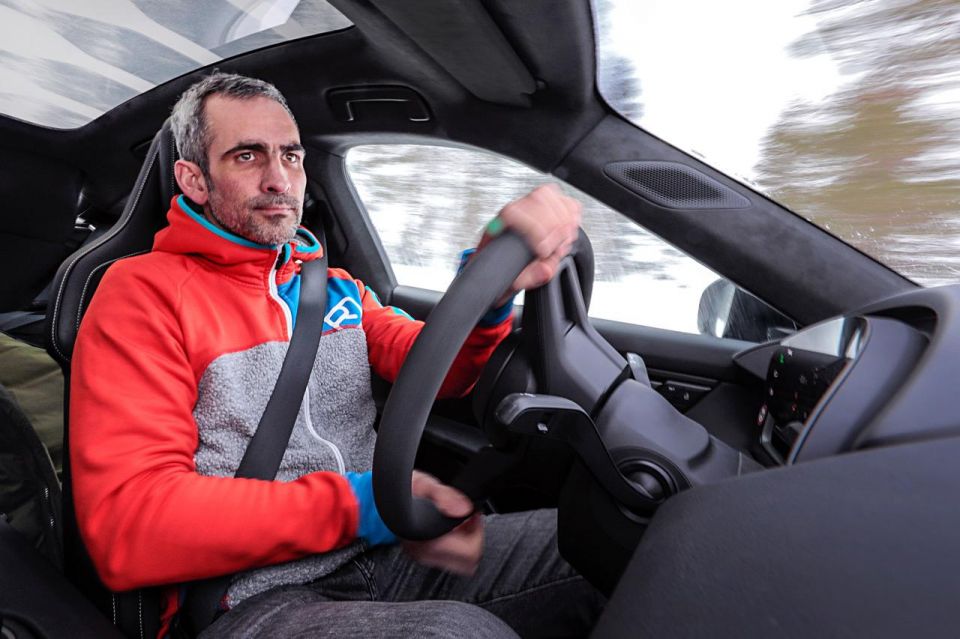
Our Turbo S is fully loaded in the cabin but Florian has done this many times before and even falling snow and slushy roads do not worry him.
Two hours in the car proves you cannot judge a Taycan by its body. Even as a passenger, the chassis improvements are easy to feel and make for a more relaxed feel in a range of conditions.
How do we know? Because when the active systems for roll and pitch and road conditions are turned to the ‘off’ setting the comfort level drops, noticeably.
The performance, as it has been from Minute One in the Taycan, is super-impressive. There is rapid step-off, solid acceleration and plenty of punch to join autobahn traffic.
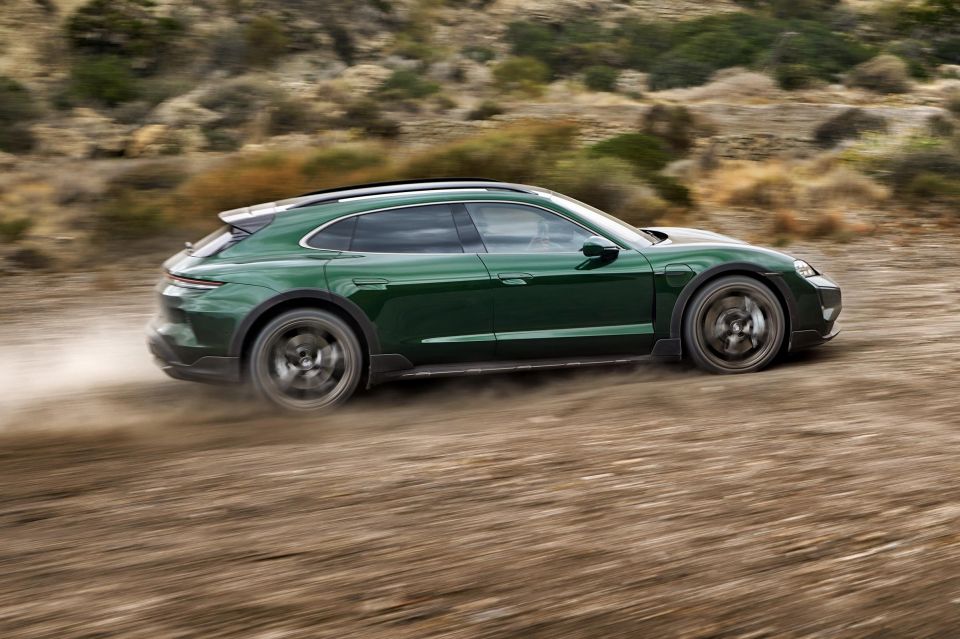
At one point, on a particularly greasy roundabout, the back end of the Taycan steps out.
We’re only travelling at middling speed, and our chauffeur gets it back into line with a flick of opposite lock, but it proves the driver focus at Porsche. There is no stupid intervention by a so-called driver-assist system, as the Taycan knows the driver has things totally under control and leaves him alone.
Then Florian goes for the party trick, hitting the ‘push to pass’ button in the mode control at five o’clock on the steering wheel, and the world goes crazy.
It makes the car scary fast, even with light traffic and no speed limit. Ten seconds are more than enough, even though it is ready to go again in less than a minute.
So Porsche has hit its ‘faster’ target, and the dash says there is plenty of range and that covers ‘further’, and the lift-up bodywork – welcome for older owners – covers off the ‘higher’ side.

The welcome change is the improvement to the ride comfort, even in the back seat, and the promise that it will carry-over to the nasty roads across much of Australia.
The car sits nicely flat, with great body control in any sort of corner, with a more limo-style experience in most conditions.
Porsche has organised a brief stopover at its Weissach technical centre for a top-up charge on the Taycan, which highlights what is possible in the ideal conditions which are unlikely to be duplicated any time soon in Australia.
But it’s those 10 seconds of frantic action, first on the autobahn and then again leaving Weissach, which will stay with me.
The new Taycan should come with a special warning that ‘Push to Pass’ can be addictive.
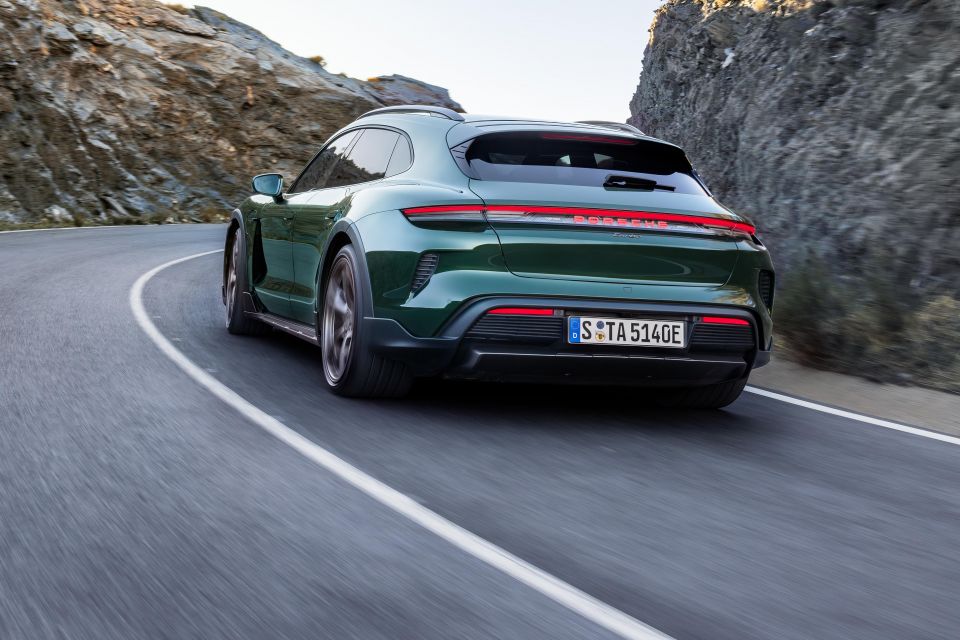
Where expert car reviews meet expert car buying – CarExpert gives you trusted advice, personalised service and real savings on your next new car.
BUY: Porsche Taycan MORE: Everything Porsche Taycan
Where expert car reviews meet expert car buying – CarExpert gives you trusted advice, personalised service and real savings on your next new car.
Paul Gover is one of the most experienced and respected motoring journalists in Australia. After more than 40 years on the automotive beat there is nothing he has not done, yet he still brings the enthusiasm of a rookie. He has worked in print, digital, radio, television and for every major publisher in the country. He is also a national motor racing champion and once co-drove with Peter Brock at Bathurst.


Andrew Maclean
2 Months Ago
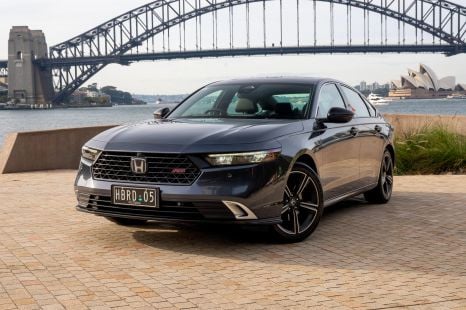

Andrew Maclean
2 Months Ago
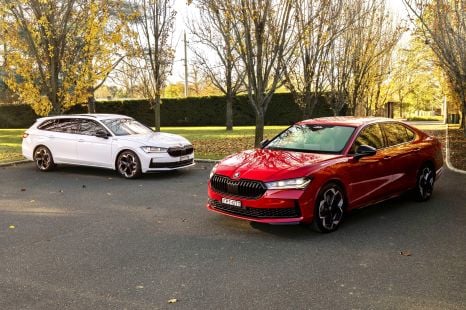

Max Davies
2 Months Ago
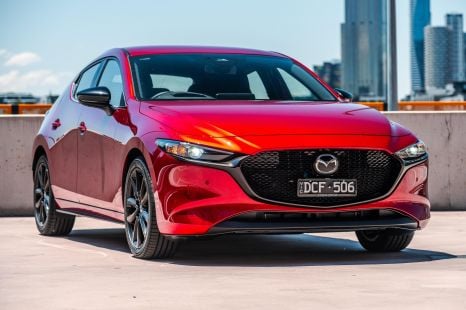

Josh Nevett
2 Months Ago


Josh Nevett
1 Month Ago


James Wong
29 Days Ago